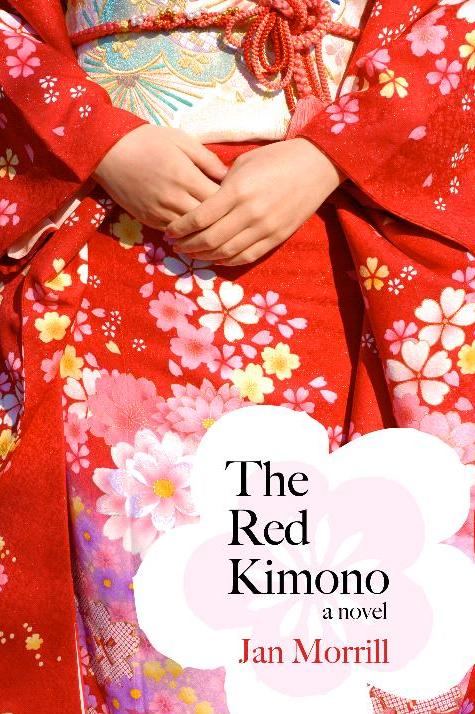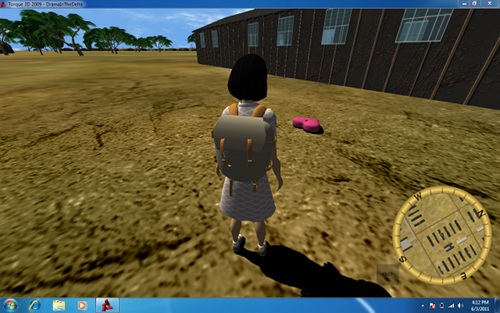April 30, 2013

For a long time, there were painfully few novels that were about the experience of Japanese Americans who were put into concentration camps during World War II. “
Farewell to Manzanar,” by Jeanne Wakatsuki Houston and James D. Houston, which was published in 1973, stood alone, unless you counted the powerful post-war story of John Okada’s 1957 classic, “
No-No Boy.”
In recent years, there have been more fictional works set during internment, most notably David Guterson’s “
Snow Falling on Cedars” but also Julie Otsuka’s “
When the Emperor Was Divine,” Rahna Reiko Rizzuto’s “
Why She Left Us,” K.P. Kollenborn’s “
Eyes Behind Belligerence” and even a children’s book, “
Baseball Saved Us” by Ken Mochizuki and and Dom Lee.
And now, there’s “
The Red Kimono,” a terrific novel by
Jan Morrill and published by the University of Arkansas Press.
Morrill, who is hapa (her mother was interned during the war) and who lives in Arkansas, writes, as they say, about what she knows. “The Red Kimono” is chockfull of finely observed details that draw the reader into the world of a Japanese American family in Berkeley, California at the start of World War II. Through thorough historical research and her own knowledge and family experiences, Morrill captures what life was like during that era, and also accurately captures the values that informed Japanese Americans as their lives were so tragically disrupted.
The story is told through the experiences of three young people who were shaped by the events that followed the bombing of Pearl Harbor: Nine-year-old Sachiko Kimura and her 17-year-old brother Nobu, and Nobu’s friend Terrence Harris, a young African American schoolmate.
The power of “The Red Kimono” is in its interweaving of racial issues that run deeper than the unjust imprisonment of 120,000 people of Japanese descent. Morrill sets the internment narrative on its edge by exploring the complex relationships of white/black/Asian/southern values clashing amidst the chaotic social backdrop of the war.
 For a long time, there were painfully few novels that were about the experience of Japanese Americans who were put into concentration camps during World War II. “Farewell to Manzanar,” by Jeanne Wakatsuki Houston and James D. Houston, which was published in 1973, stood alone, unless you counted the powerful post-war story of John Okada’s 1957 classic, “No-No Boy.”
In recent years, there have been more fictional works set during internment, most notably David Guterson’s “Snow Falling on Cedars” but also Julie Otsuka’s “When the Emperor Was Divine,” Rahna Reiko Rizzuto’s “Why She Left Us,” K.P. Kollenborn’s “Eyes Behind Belligerence” and even a children’s book, “Baseball Saved Us” by Ken Mochizuki and and Dom Lee.
And now, there’s “The Red Kimono,” a terrific novel by Jan Morrill and published by the University of Arkansas Press.
Morrill, who is hapa (her mother was interned during the war) and who lives in Arkansas, writes, as they say, about what she knows. “The Red Kimono” is chockfull of finely observed details that draw the reader into the world of a Japanese American family in Berkeley, California at the start of World War II. Through thorough historical research and her own knowledge and family experiences, Morrill captures what life was like during that era, and also accurately captures the values that informed Japanese Americans as their lives were so tragically disrupted.
The story is told through the experiences of three young people who were shaped by the events that followed the bombing of Pearl Harbor: Nine-year-old Sachiko Kimura and her 17-year-old brother Nobu, and Nobu’s friend Terrence Harris, a young African American schoolmate.
The power of “The Red Kimono” is in its interweaving of racial issues that run deeper than the unjust imprisonment of 120,000 people of Japanese descent. Morrill sets the internment narrative on its edge by exploring the complex relationships of white/black/Asian/southern values clashing amidst the chaotic social backdrop of the war.
For a long time, there were painfully few novels that were about the experience of Japanese Americans who were put into concentration camps during World War II. “Farewell to Manzanar,” by Jeanne Wakatsuki Houston and James D. Houston, which was published in 1973, stood alone, unless you counted the powerful post-war story of John Okada’s 1957 classic, “No-No Boy.”
In recent years, there have been more fictional works set during internment, most notably David Guterson’s “Snow Falling on Cedars” but also Julie Otsuka’s “When the Emperor Was Divine,” Rahna Reiko Rizzuto’s “Why She Left Us,” K.P. Kollenborn’s “Eyes Behind Belligerence” and even a children’s book, “Baseball Saved Us” by Ken Mochizuki and and Dom Lee.
And now, there’s “The Red Kimono,” a terrific novel by Jan Morrill and published by the University of Arkansas Press.
Morrill, who is hapa (her mother was interned during the war) and who lives in Arkansas, writes, as they say, about what she knows. “The Red Kimono” is chockfull of finely observed details that draw the reader into the world of a Japanese American family in Berkeley, California at the start of World War II. Through thorough historical research and her own knowledge and family experiences, Morrill captures what life was like during that era, and also accurately captures the values that informed Japanese Americans as their lives were so tragically disrupted.
The story is told through the experiences of three young people who were shaped by the events that followed the bombing of Pearl Harbor: Nine-year-old Sachiko Kimura and her 17-year-old brother Nobu, and Nobu’s friend Terrence Harris, a young African American schoolmate.
The power of “The Red Kimono” is in its interweaving of racial issues that run deeper than the unjust imprisonment of 120,000 people of Japanese descent. Morrill sets the internment narrative on its edge by exploring the complex relationships of white/black/Asian/southern values clashing amidst the chaotic social backdrop of the war.




 Japanese Americans know about internment. My wife Erin's parents, grandparents and great-grandparents on both sides were rounded up from Sacramento County, Calif. and eventually imprisoned at Rohwer, one of two concentration camps in Arkansas built during World War II to house Japanese Americans out of fear and racial hysteria. There were 10 in all, including Camp Amache in desolate southeastern Colorado. (Note: There's been a gradual move towards the use of the term "concentration camps" because that's the term the U.S. government used for them when they weren't using euphemisms like "assembly center" or "relocation center.")
For many older Japanese Americans, the first thing they ask of each other when they meet other JAs is, "what camp was your family in?" and they're not talking about summer camp.
Japanese Americans know about internment. My wife Erin's parents, grandparents and great-grandparents on both sides were rounded up from Sacramento County, Calif. and eventually imprisoned at Rohwer, one of two concentration camps in Arkansas built during World War II to house Japanese Americans out of fear and racial hysteria. There were 10 in all, including Camp Amache in desolate southeastern Colorado. (Note: There's been a gradual move towards the use of the term "concentration camps" because that's the term the U.S. government used for them when they weren't using euphemisms like "assembly center" or "relocation center.")
For many older Japanese Americans, the first thing they ask of each other when they meet other JAs is, "what camp was your family in?" and they're not talking about summer camp.
